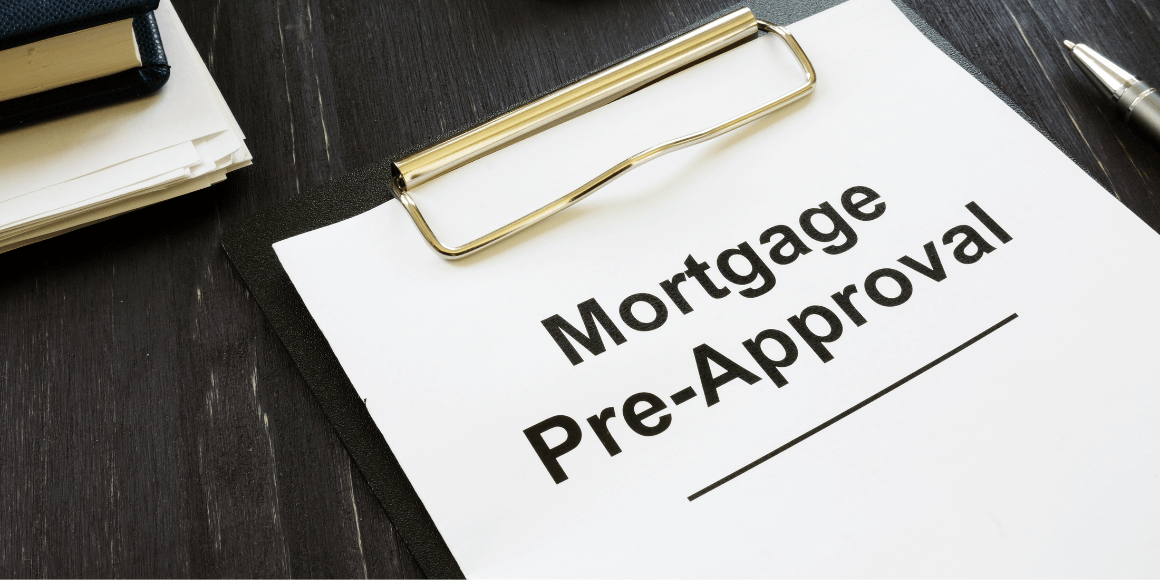Housing inventory is up, and bidding wars are down. This means there are more houses to choose from, and buyers can purchase a home without having to fight for it or offer thousands over the asking price.
Even though the pace of the housing market is less frenetic, it’s still a good idea for homebuyers to get a mortgage pre-approval before they start house hunting.
What a Mortgage Pre-Approval Is (and What It Is Not)
Pre-approval is an "offer" from a mortgage lender that estimates the maximum amount of money they would be willing to lend if you meet specific criteria.
The lender is looking for strong indicators that you are willing and able to repay a loan. The primary factors that determine your eligibility for mortgage pre-approval include your credit score, debt-to-income ratio, employment history, and assets.
It’s important to remember that pre-approval does not guarantee that you will receive the loan. The offer can be voided for many reasons, including income changes, discrepancies in credit history, and new lines of credit that lower your credit score or increase your debt-to-income ratio.
Pre-approval applications can potentially take one business day to be approved. However, if your lender has a lot of information to verify, you may not get your answer for up to a week. Once you have your pre-approval letter, it’s good for up to 90 days. After it expires, you will have to reapply.
How Pre-Approval Is Different from Pre-Qualifying for a Mortgage
You may have heard the terms “pre-approval” and “pre-qualification” used interchangeably. However, they mean different things.
Mortgage pre-qualification:
- The lender does a high-level review of your creditworthiness.
- Pre-qualification requires basic financial information, such as annual income and monthly expenses.
- Pre-qualification requires a soft credit inquiry to pre-screen your credit report, so your credit score isn’t affected.
- Pre-qualification gives you a very high-level estimate of how much you can borrow and doesn’t carry the same weight as a pre-approval letter.
Mortgage pre-approval:
- The lender does a deep dive into your credit and finances.
- Pre-approval requires much more documentation, including personal identification, social security card, paystubs, bank statements, and investment account statements.
- Pre-approval requires a hard credit inquiry so the lender can look at your credit score, see how much debt you currently have, and determine how well you have handled debt in the past. This type of credit pull will cause your credit score to temporarily drop.
- This option strengthens your buying power when you’re ready to make an offer on a home.
How to Get Pre-Approved for a Mortgage
When you work with an experienced mortgage lender, the pre-approval application process can be completed from start to finish in days. Here are the steps you’ll take when applying for a mortgage pre-approval:
Select a lender.
There can be variations in the costs and services of different lenders. Be sure to look closely at rates and fees and research online customer reviews to hear what real clients think about a lender.
Although it adds a bit of time and effort, consider getting pre-qualified by several lenders before you decide where to submit a pre-approval application. This allows you to compare loan estimates.
Complete a home loan application.
Once you have decided on a lender, it’s time to start your application. The lender will pull your credit report and look at factors such as credit score, debt-to-income ratio, employment history, and open lines of credit.
Provide documentation of assets and income.
Before a lender pre-approves you for a mortgage, they need to verify your income, assets, and debt load. To speed up the process, it’s helpful to know what documents your lender needs to review so you can have them ready.
This list can vary depending on the type of loan you are being pre-approved for and whether you are self-employed. But in general, you will be asked to provide the following:
- Identification
- Social security number
- Proof of income
- Employment verification
- Proof of assets
- W-2 statements
- Pay stubs
- Bank statements
Receive your pre-approval letter.
Provided the lender doesn’t find major issues with your credit, debt, or employment, you will receive your pre-approval letter in about three business days.
The pre-approval letter estimates the maximum amount the lender will let you borrow. Remember, this letter does not guarantee you will receive the loan.
Start house hunting!
A pre-approval letter lets sellers know you have funding in place, increasing the chance of your offer being accepted in a highly competitive market.
Once you find your house, make an offer, and sign a contract, notify your lender to begin finalizing your mortgage application. This will allow your lender to reconfirm your financials and lock in your loan's terms and interest rate.
The Bottom Line: Benefits of Being Pre-Approved for a Mortgage
Getting pre-approved for a mortgage isn’t a mandatory step in the homebuying process. However, the ROI makes it worth the effort. Getting pre-approved:
- Puts you one step closer to homeownership
- Identifies how much home loan you can afford
- Provides confidence in your ability to obtain financing
- Shows the seller you are ready and able to buy their home
- Allows you to close on your loan faster
- Helps you compete with cash buyers
Now that you know how—and why—to get pre-approved for a mortgage, you’re ready to take the next step and submit a pre-approval application. Apply now with FFB Mortgage Lenders, and we can help you start your pre-approval application so you can do it on your own time in less than 15 minutes.
About the Author
-1-1.png)
First Federal Bank Mortgage Lenders
We’re honored to be your partner in the homebuying process. And like any good relationship, it helps to know who you’re working with. A home is the most important purchase we can make in a lifetime. At FFB, we’re built to deliver exceptional customer service from your first call to your closing day and beyond. First Federal Bank has helped families find the right loan to fit their needs for decades.


